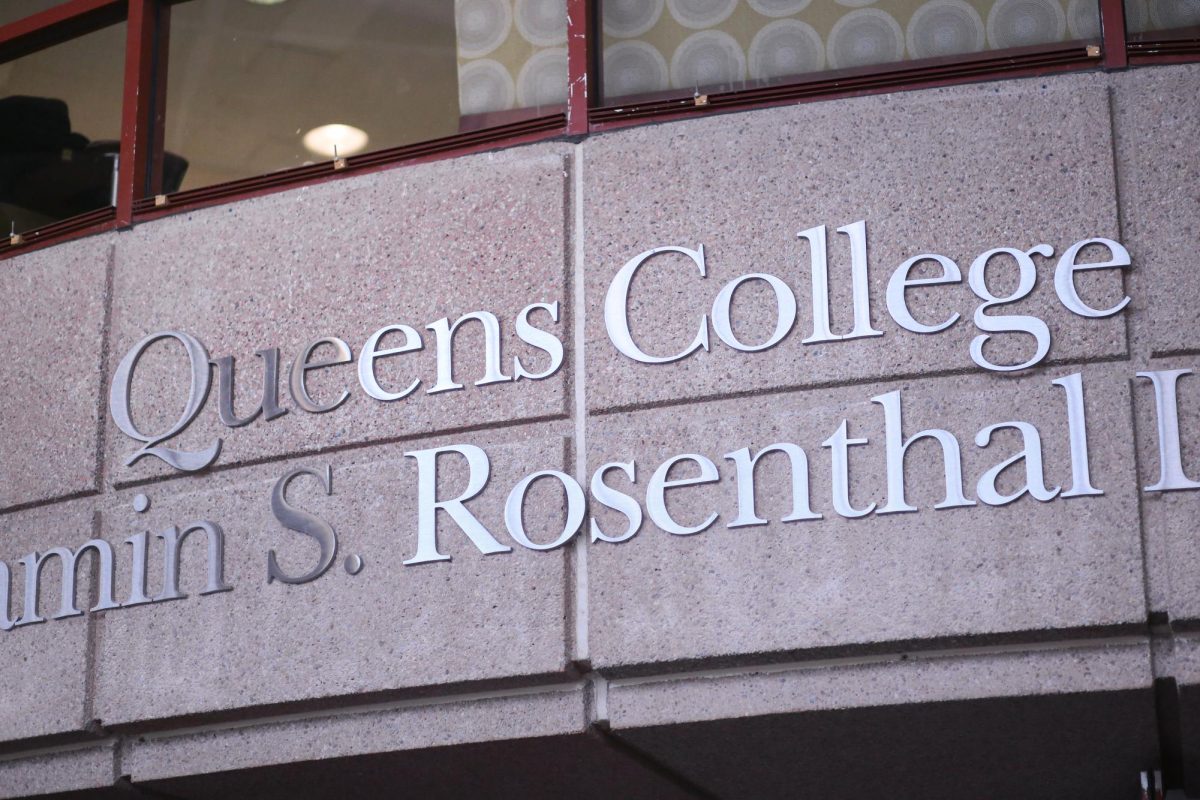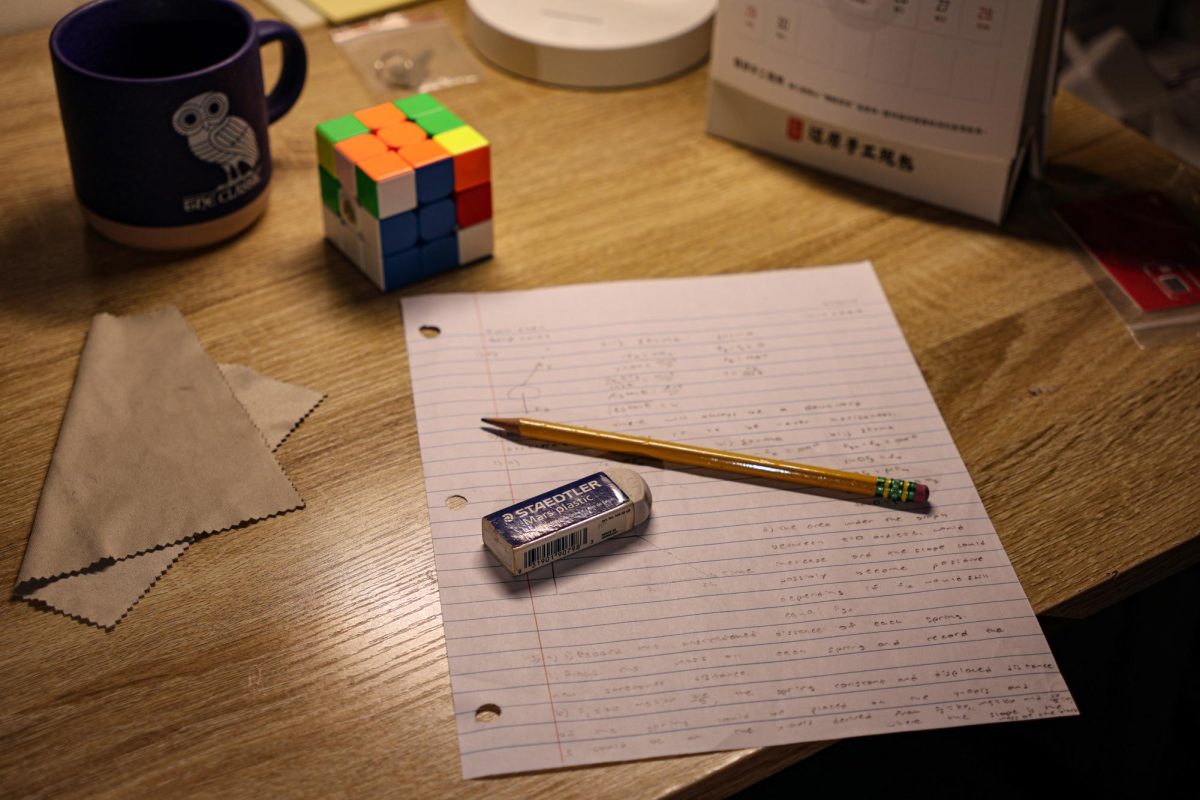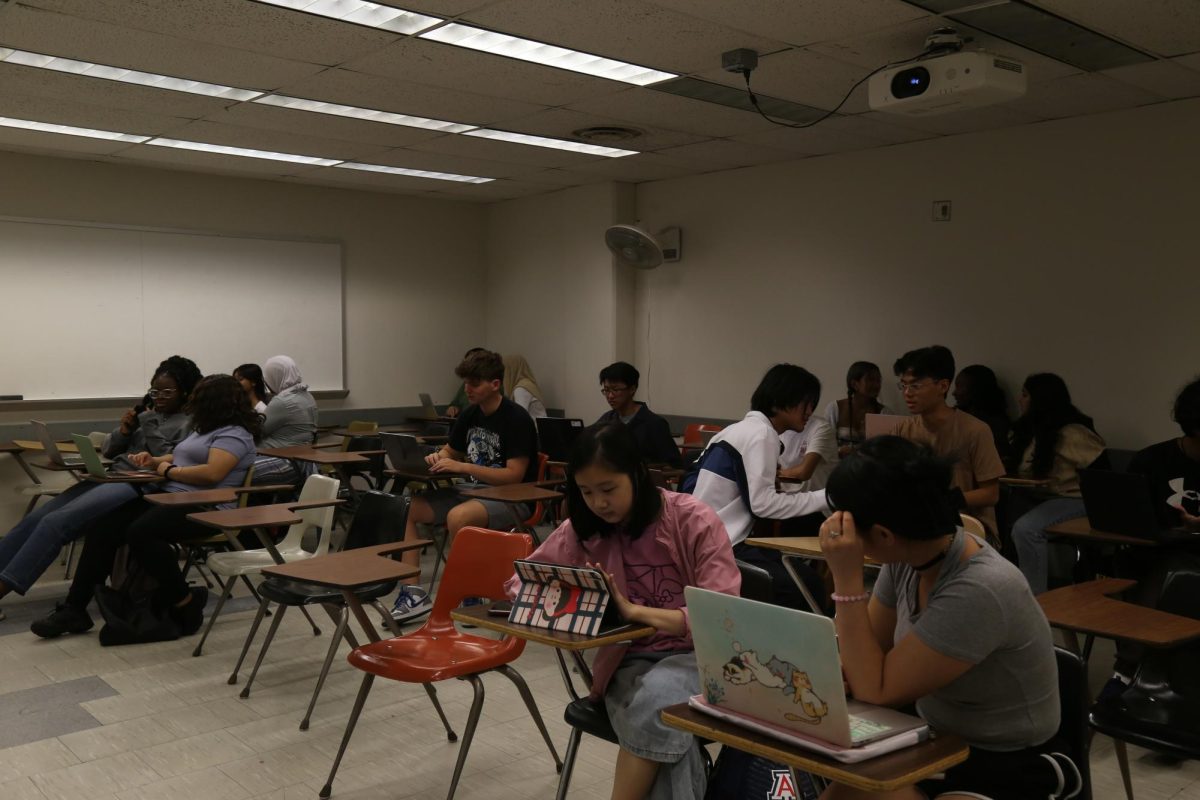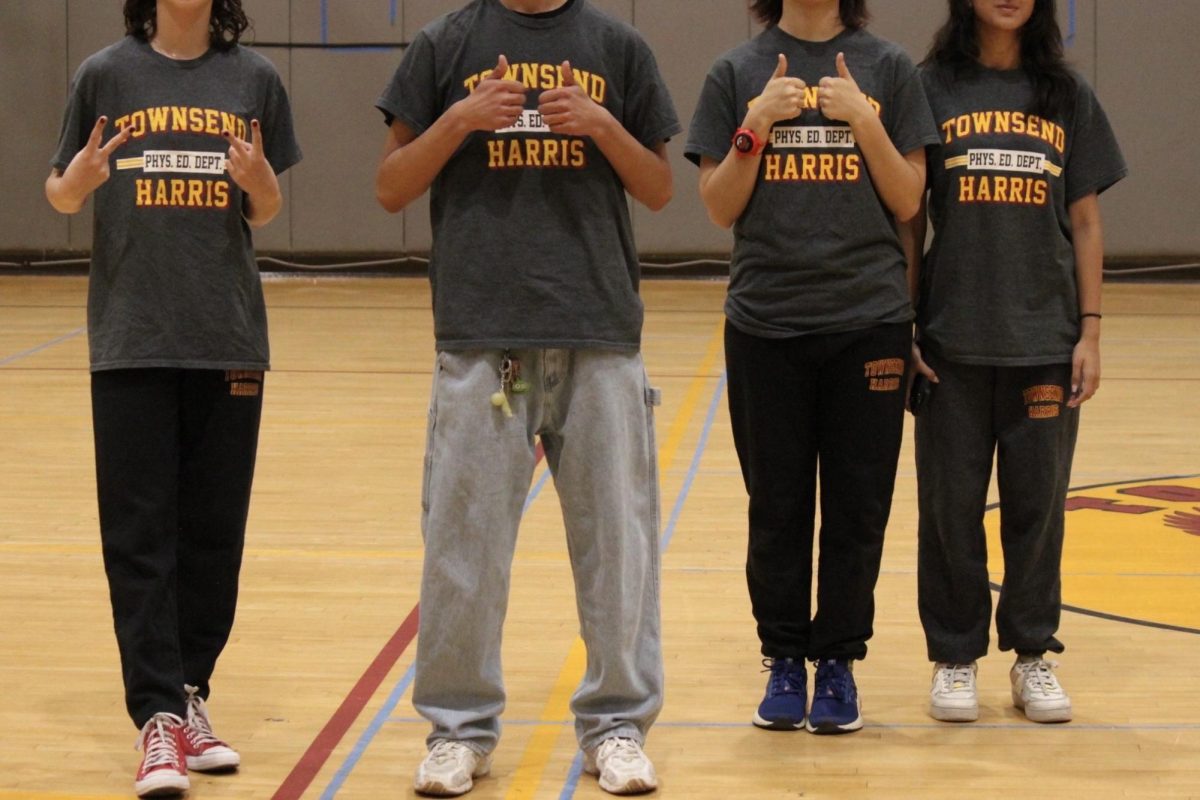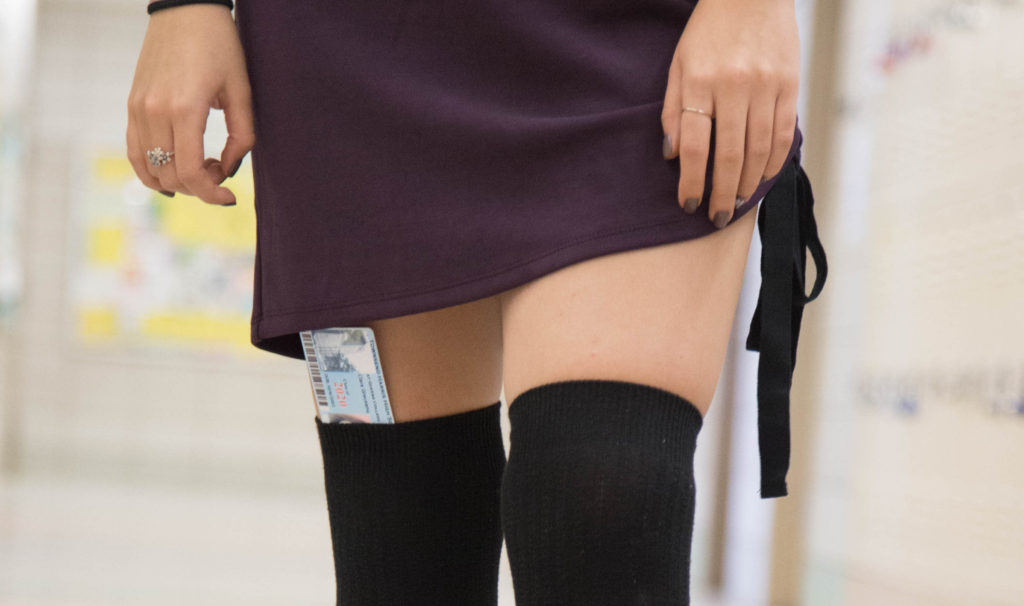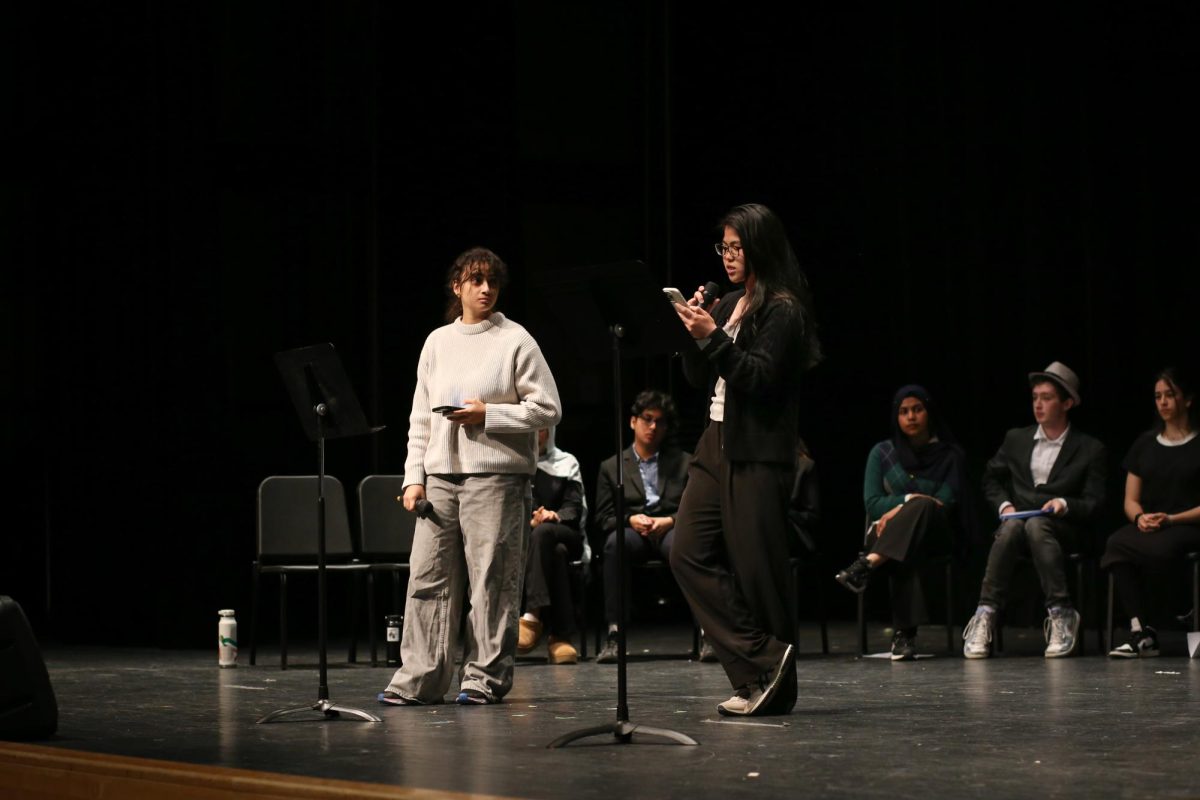
In a mass email to the student body, Principal Brian Condon effectuated a new dress code. Disseminated on January 29, it is tailored to the needs of Townsend Harris students in accordance with New York City’s Department of Education (DOE) Chancellor’s Regulations. Its new progressive policies allows for students to wear ripped jeans, tank tops, spaghetti straps, and fitted pants. Vulgar or violent content is not to be displayed, backless shoes (for instance sandals and flip flops) are not allowed, clothing that clearly shows undergarments, and anything that conceals the face or ears, unless for religious purposes, are banned.
It addresses general modesty by stating the need to cover intimate areas. An evident change from the old policy lies in the lack of constraints on cleavage or midriff coverage. It also discards the old policy that “All dresses, shorts and skirts must be no more than 3 ½ inches above the knee cap and should be of equal length in the front and the back (the same length as your THHS ID card held vertically from the knee cap). If leggings are worn with a skirt, dress, or shorts the policy is still in effect.”
Unlike the previous dress code, the document is extensive and written in meticulous detail. It preambles by detailing the dress code philosophy, the school values, and the goals of these policies. “Townsend Harris High School’s student dress code supports equitable educational access and is written in a manner that does not reinforce stereotypes,” it began.
“The old one [code] dismisses the idea of personal accountability and puts the idea that students’ skin is an inherently visible excuse to not focus on work,” said sophomore Mavis Li.
The stringent restrictions of the old dress code affected the way students, even after graduation, approached dress in order to adhere to the regulations instilled in them. “It took me three years after graduating Townsend to be comfortable wearing shorts in public or showing my shoulders. This kinda stuff was more pervasive than I even realized as a teenager. Props to Townsend for changing with the times,” alum Rebecca Travalja commented on The Classic Facebook page under a post of the new dress code.
Alum Jenny Ruan wrote a comment as well, expressing that this was “a great start to a change that will be more aligned with today’s culture/values of self-expression.” She shared an experience with the old dress code that affected how she dressed for her remaining years at THHS. “I remember being called out by a gym teacher in the middle of a crowded hallway for dress code violation. It was, to say the least, embarrassing. Especially it being the first day of school and I was a sophomore-transfer student,” she wrote.
Yet another alum, Laurie Beckoff, commented, “Welcome to the 21st century, THHS. Good on you, Principal Condon.” In 2012, Laurie wrote a poem for The Phoenix on the absurdity of restricting students from showing off their shoulders. To satirize the dress code deeming shoulders to be too arousing for school, she ended the poem with the lines “Beware when you expose them, as I smolder/With the hope to run my fingers down thy shoulders.”
The first step to reforming the dress code was to determine under which sphere of concern dress code violations fell under. “We had to ask ourselves where does particular student behavior fall into – what domain does it fall into? Does it fall into discipline? Does it fall into counseling?” stated Principal Condon. “The best way to handle it is not really with a demerit but it is to reach out to the people in the building that work with children, which would be your guidance counselor. So I asked teachers to—if they notice something— not address it publicly to the child… what you should do is refer to the guidance counselor…”
Next came developing a code that was both fair and in the best interests of the students. “I can’t tell you how many dress codes I looked at: New York City, New York State, outside New York State, Canada… I tried looking at everything I could— I looked at high school dress codes, college dress codes, the business dress codes..” Principal Condon explained.
Students at THHS aired their sentiments, holding that the dress code should not be a document that dictates how students dress, but rather a guiding outline that molds the way people approach their attire.
Junior Brendan Straw remarked, “I feel that the faculty should configure the dress code in ways that all students feel comfortable with. To a certain degree, however, not to the point in which they are essentially telling you what to wear.”
“The [new] dress code is way past due because honestly, a lot of schools don’t prohibit the way you dress and I think it’s because they realize it’s not about what you wear that defines you as a student, and also saying ‘you can show this amount of skin or else it’s inappropriate’ really teaches people incorrect values about judging a book by its cover,” said junior Kayla Pan.
“Personally I don’t dress in a way that shows much skin but it is still great to hear that other students are comfortable to dress in a way that expresses who they are now while they still can,” Mavis commented.
“I don’t believe that what a kid wears to school really makes a difference in the way he or she is going to learn. The only thing that I’m curious about is what brings a student to wear the smallest things they own to school. Does it affect learning or teaching? No. I think it’s more of a personal choice. But the issue is the reason why they chose to do so,” Spanish teacher Christian Castillo stated.
AP World History teacher Aliza Sherman maintains that individuals must have a sense of propriety that complements modernity and cultural expression embedded in their ethics. “Life does not come with a rubric. No one will tell you on a written funeral notice that wearing a red sequin dress is inappropriate. But it is nonetheless inappropriate. It is difficult to articulate exactly what is inappropriate,” she comments. “This is especially true at THHS where we have such a wonderfully diverse student body, and cultural norms vary widely. A common sense approach which bears in mind our goals for learning and respect for each other should guide our dress.”
Principal Condon conveyed the multidimensionality of assessing the dress code and what it aims to accomplish. “At Townsend Harris you have to balance things. There’s tradition and then there’s progress. So, you have to be careful not to change tradition too much because a lot of the things we do here are why the school is as good as it is,” he stated. “But how we do those things can change, so I believe that agency is something that we’re supposed to develop into you as individuals.”

